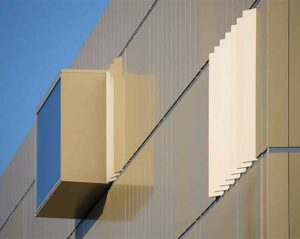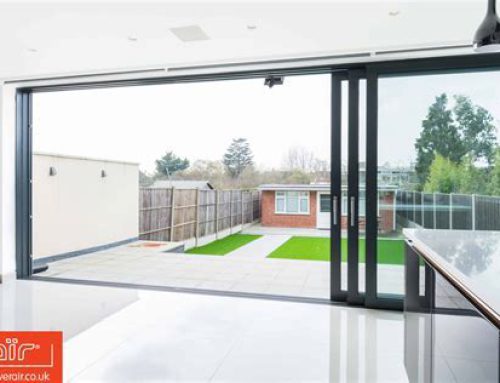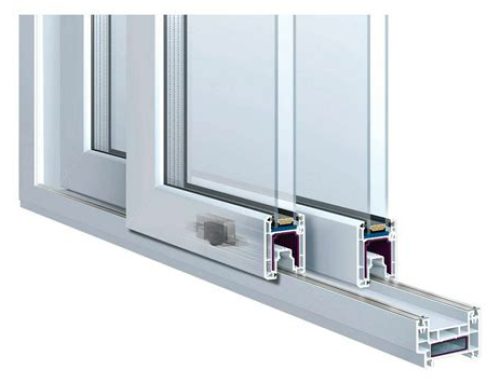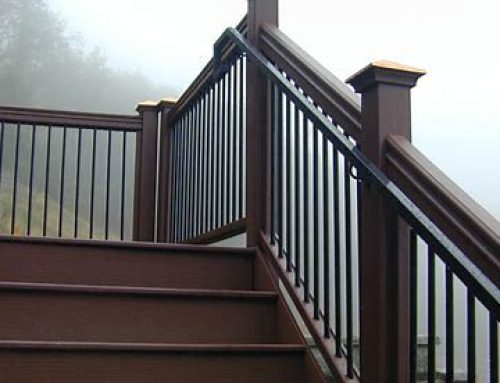Sale of aluminum profiles for dry building facades

Sale of aluminum profiles for dry building facades ,In the ever-evolving world of architecture and construction, innovation is key to creating structures that are not only aesthetically pleasing but also functional and sustainable. One of the significant advancements in recent years has been the adoption of aluminum profiles for dry building facades. This trend marks a departure from traditional construction methods, offering a myriad of benefits that cater to modern architectural demands.
The Advantages of Aluminum Profiles
Aluminum profiles have gained traction due to their versatility and durability. Unlike traditional building materials such as concrete or wood, aluminum offers a lightweight yet robust solution for constructing facades. This lightweight nature simplifies installation processes and reduces the overall structural load, making it ideal for both new constructions and renovations.
Moreover, aluminum profiles are highly customizable, allowing architects and designers to create unique facades that enhance the visual appeal of buildings. The material can be easily molded into various shapes and sizes, accommodating intricate designs and architectural details that would be challenging to achieve with other materials.
Sustainable Building Practices
In an era where sustainability is paramount, aluminum profiles shine as an environmentally friendly choice. Aluminum is fully recyclable, with a high recycling rate that reduces its carbon footprint significantly compared to other construction materials. This recyclability aligns with global efforts towards sustainable building practices, making aluminum profiles a preferred option for eco-conscious developers and architects.
Additionally, aluminum’s inherent properties contribute to energy efficiency. It reflects sunlight, reducing the heat absorbed by buildings and lowering cooling costs during hot seasons. This thermal performance helps in maintaining comfortable indoor temperatures while minimizing the reliance on artificial cooling systems.
Functional Benefits
Beyond aesthetics and sustainability, aluminum profiles offer practical advantages that enhance building functionality. They provide excellent weather resistance, shielding structures from harsh environmental conditions such as rain, wind, and UV radiation. This durability ensures long-term performance and reduces maintenance costs over the building’s lifespan.
Furthermore, aluminum profiles are compatible with advanced building technologies. They can incorporate insulation materials and accommodate integrated systems such as ventilation ducts and wiring, optimizing the efficiency and functionality of modern buildings.
Market Trends and Future Prospects
The market for aluminum profiles in dry building facades is expanding rapidly, driven by increasing urbanization and the growing demand for energy-efficient and visually striking buildings. Architects and developers are increasingly opting for aluminum due to its adaptability, sustainability credentials, and aesthetic appeal.
Looking ahead, technological advancements in aluminum manufacturing are expected to further enhance its properties and expand its applications. Innovations such as nano-coatings for improved durability and enhanced thermal break technologies will likely push the boundaries of what aluminum profiles can achieve in building facades.
Embracing Innovation in Architecture
The integration of aluminum profiles into dry building facades not only meets current architectural demands but also paves the way for future innovations in construction. Architects and designers are increasingly embracing this versatile material to push the boundaries of what is possible in building design. From sleek, modern skyscrapers to sustainable residential complexes, aluminum profiles offer a canvas for creativity while ensuring structural integrity and longevity.
Addressing Challenges and Opportunities
While the adoption of aluminum profiles brings numerous benefits, it also presents challenges that must be addressed. Designers and engineers must carefully consider factors such as thermal expansion, acoustic properties, and compatibility with other building materials to maximize the performance and durability of aluminum facades. Additionally, continuous research and development are essential to refine manufacturing processes and enhance the material’s capabilities further.
Opportunities abound for manufacturers and suppliers specializing in aluminum profiles. The growing demand for sustainable building solutions, coupled with advancements in digital design and fabrication technologies, opens new avenues for innovation and market expansion. Companies that invest in research, develop cutting-edge products, and provide tailored solutions to meet diverse architectural needs will likely thrive in this dynamic industry landscape.
The Role of Regulations and Standards
As with any construction material, adherence to regulations and standards is crucial to ensure safety, quality, and environmental responsibility. Regulatory frameworks governing the use of aluminum profiles in building facades vary across regions, emphasizing the importance of compliance and certification. Manufacturers and contractors must stay abreast of evolving standards and codes to deliver projects that meet or exceed industry requirements.
Collaborative Approaches to Success
Successful implementation of aluminum profiles in building facades often requires collaboration among architects, engineers, contractors, and manufacturers. By fostering partnerships and leveraging collective expertise, stakeholders can streamline project workflows, mitigate risks, and achieve innovative design solutions that enhance both the built environment and user experience.
Challenges in Implementation and Future Outlook
While aluminum profiles offer significant advantages, their widespread adoption faces challenges that must be addressed for continued growth and innovation in the industry. One of the primary challenges is cost, as aluminum can initially be more expensive than traditional building materials. However, the long-term benefits of reduced maintenance and energy costs often outweigh the upfront investment, making aluminum profiles a cost-effective choice over the building’s lifecycle.
Another challenge is the need for skilled labor and specialized installation techniques. Proper installation is crucial to ensure the performance and durability of aluminum facades, requiring trained professionals who understand the intricacies of working with aluminum profiles. As demand increases, investing in training programs and certifications for construction workers becomes essential to maintain quality standards and project success.
Looking ahead, the future of aluminum profiles in dry building facades appears promising. Technological advancements continue to improve the material’s performance, with innovations in coatings, finishes, and fabrication techniques enhancing durability, aesthetics, and sustainability. Digital design tools and Building Information Modeling (BIM) are also transforming how architects and engineers plan and execute projects, facilitating more precise customization and integration of aluminum profiles into building facades.
Environmental Considerations and Sustainability
Amid growing concerns about climate change and environmental impact, aluminum profiles stand out for their sustainability attributes. Aluminum is highly recyclable, with a recycling rate that exceeds 90% globally. Using recycled aluminum reduces energy consumption and greenhouse gas emissions compared to primary production, aligning with sustainability goals and contributing to LEED (Leadership in Energy and Environmental Design) certification requirements for green buildings.
Furthermore, aluminum’s inherent properties contribute to energy efficiency and environmental sustainability. Its lightweight nature reduces transportation costs and energy consumption during installation, while its ability to reflect sunlight helps in maintaining indoor comfort and reducing reliance on artificial cooling. These factors make aluminum profiles a preferred choice for developers and architects committed to sustainable building practices and reducing the ecological footprint of construction projects.
Global Adoption and Market Dynamics
The global market for aluminum profiles in building facades is expanding rapidly, driven by urbanization, infrastructure development, and increasing awareness of environmental sustainability. Regions such as Europe, North America, and Asia-Pacific are leading in the adoption of aluminum profiles due to stringent building codes, aesthetic preferences, and a focus on energy efficiency. The Middle East and emerging markets in Africa are also witnessing growth as urbanization accelerates and construction activities rise.
Manufacturers of aluminum profiles are responding to this demand by investing in research and development to innovate new products that meet evolving architectural and regulatory requirements. This includes developing profiles that offer enhanced thermal performance, acoustic insulation, and resistance to corrosion and weathering, thereby improving the overall durability and performance of building facades.
Architectural Innovation and Design Trends
Architects and designers are increasingly leveraging the versatility of aluminum profiles to create iconic and sustainable building facades. From sleek, minimalist designs to intricate geometric patterns, aluminum profiles allow for creative expression while meeting functional requirements. The ability to integrate with other building systems such as lighting, ventilation, and shading adds another layer of flexibility and customization, enabling architects to achieve both aesthetic appeal and operational efficiency.
Design trends favoring sustainable and energy-efficient buildings continue to drive the use of aluminum profiles. Buildings designed with aluminum facades often achieve high levels of energy performance and indoor comfort, contributing to certifications such as LEED and BREEAM (Building Research Establishment Environmental Assessment Method). These certifications not only validate the environmental credentials of buildings but also enhance their marketability and appeal to environmentally conscious tenants and investors.
Future Directions and Innovations
Looking ahead, the future of aluminum profiles in building facades is poised for further innovation and growth. Advancements in manufacturing techniques, including extrusion processes and surface treatments, will continue to enhance the material properties and expand design possibilities. Digitalization and Building Information Modeling (BIM) are expected to streamline design-to-construction workflows, enabling more efficient and accurate integration of aluminum profiles into building projects.
Moreover, as sustainability becomes increasingly integral to building design and construction practices, aluminum profiles will play a crucial role in achieving net-zero energy goals and reducing the overall environmental impact of urban development. Innovations in recycling technologies and circular economy principles will further bolster the sustainability credentials of aluminum profiles, ensuring that they remain a preferred choice for future generations of architects, developers, and building owners.
Challenges and Considerations for the Industry
Despite the numerous benefits and promising future of aluminum profiles in building facades, several challenges and considerations remain for the industry to address:
- Cost Management: While aluminum profiles offer long-term savings in maintenance and energy costs, the initial investment can be higher than traditional materials. Manufacturers and stakeholders must focus on optimizing production processes and sourcing strategies to make aluminum profiles more cost-competitive without compromising quality.
- Regulatory Compliance: Building regulations and standards vary across regions, impacting the design, installation, and maintenance of aluminum facades. Manufacturers and developers need to stay informed about local codes and standards to ensure compliance and mitigate risks during project execution.
- Durability and Maintenance: Although aluminum is corrosion-resistant, proper maintenance is essential to preserve its aesthetic appeal and structural integrity over time. Regular inspections and cleaning routines are necessary to prevent issues such as oxidation and surface degradation, especially in environments with harsh weather conditions.
- Skills and Training: The installation of aluminum profiles requires specialized skills and knowledge. Training programs for construction workers and contractors are crucial to ensure proper handling, cutting, and installation techniques, thereby minimizing errors and maximizing the performance of aluminum facades.
Innovation and Future Outlook
Innovations in aluminum profile technology continue to drive the industry forward. Manufacturers are exploring new alloys, coatings, and finishes to enhance durability, improve thermal performance, and offer new design possibilities. Advanced manufacturing techniques such as 3D printing and digital fabrication are also revolutionizing the production of customized aluminum profiles, enabling architects to realize complex designs with greater precision and efficiency.
The integration of smart technologies into aluminum facades represents another frontier of innovation. From embedded sensors for real-time monitoring of building performance to adaptive facades that respond to environmental conditions, smart aluminum profiles are paving the way for more intelligent and sustainable buildings.
Collaboration and Industry Partnerships
Collaboration among stakeholders in the construction industry is essential for the continued success and advancement of aluminum profiles in building facades. Architects, engineers, manufacturers, contractors, and developers must work together to exchange knowledge, share best practices, and innovate new solutions. This collaborative approach can lead to improved project outcomes, reduced costs, and accelerated adoption of aluminum profiles in diverse architectural projects worldwide.
Industry partnerships also play a crucial role in driving innovation and expanding market reach. By forming strategic alliances, manufacturers can leverage complementary strengths in technology, distribution, and market expertise to develop tailored solutions that meet the evolving needs of architects and developers. These partnerships foster innovation in product development, enhance customer service, and create opportunities for joint research and development initiatives.
Resilience and Adaptability in Design
As urban environments face increasing challenges from climate change and rapid urbanization, the resilience and adaptability of building facades become paramount. Aluminum profiles offer inherent properties such as durability, weather resistance, and thermal performance that contribute to the resilience of buildings against environmental stressors. Architects are increasingly incorporating these features into their designs to create buildings that can withstand diverse climatic conditions while maintaining optimal energy efficiency and occupant comfort.
Moreover, the adaptability of aluminum profiles allows architects to respond to changing design trends and functional requirements. Whether designing high-rise office towers, residential complexes, or cultural institutions, aluminum profiles can be customized to achieve a wide range of architectural styles and performance criteria. This flexibility ensures that buildings not only meet current aesthetic and functional demands but also remain relevant and adaptable for future needs.
Global Impact and Sustainability Goals
The global impact of aluminum profiles extends beyond individual buildings to encompass broader sustainability goals and environmental stewardship. By choosing aluminum, architects and developers contribute to reducing the carbon footprint of buildings through energy-efficient designs and recyclable materials. The use of recycled aluminum in building facades promotes circular economy principles, conserves natural resources, and reduces greenhouse gas emissions associated with primary aluminum production.
Furthermore, sustainable building certifications such as LEED and BREEAM recognize the environmental benefits of aluminum profiles, incentivizing developers to prioritize sustainability in their projects. These certifications not only enhance the marketability and value of buildings but also demonstrate a commitment to environmental responsibility and long-term sustainability.
Challenges and Future Considerations
Despite the promising outlook, the widespread adoption of aluminum profiles for building facades faces several challenges that require ongoing attention and innovation:
- Material Innovation: Continued research and development are essential to enhance the performance and sustainability of aluminum profiles. Innovations in alloy compositions, surface treatments, and insulation technologies can further improve thermal efficiency, durability against weathering, and overall lifecycle performance.
- Cost Efficiency: While the long-term benefits of aluminum profiles are evident, upfront costs can still pose a barrier to adoption, particularly for smaller-scale projects or in regions with budget constraints. Finding ways to reduce manufacturing costs, optimize supply chains, and increase economies of scale will be critical to making aluminum profiles more accessible and cost-effective for a broader range of building projects.
- Regulatory Harmonization: Building codes and regulations vary globally, affecting the design, manufacturing, and installation of aluminum facades. Harmonizing standards and codes across regions can facilitate international trade and adoption of aluminum profiles while ensuring consistency in quality, safety, and environmental performance.
- Education and Skills Development: Addressing the skills gap and promoting education in aluminum profile installation and maintenance are essential for ensuring quality construction practices. Training programs, certifications, and knowledge-sharing initiatives can help improve workforce capabilities and ensure the proper handling and installation of aluminum profiles in building facades.
Technological Advancements and Opportunities
Looking ahead, technological advancements hold significant promise for the future of aluminum profiles in building facades:
- Digitalization and BIM: Digital design tools and Building Information Modeling (BIM) enable architects and engineers to optimize the use of aluminum profiles in building facades. BIM facilitates collaborative workflows, enhances design accuracy, and supports the integration of complex building systems, ensuring efficient project delivery and performance.
- Smart Building Integration: The integration of smart technologies into aluminum facades opens up opportunities for enhanced building performance monitoring, adaptive facades, and improved energy management. Sensors, actuators, and automated control systems can optimize natural lighting, ventilation, and temperature regulation, thereby increasing energy efficiency and occupant comfort.
- Circular Economy Initiatives: Embracing circular economy principles, such as recycling and reuse of aluminum materials, can further enhance the sustainability credentials of aluminum profiles. Developing closed-loop systems for aluminum recovery and recycling promotes resource conservation and reduces environmental impact, aligning with global sustainability goals.
Conclusion: Building a Sustainable Future
In conclusion, the evolution of aluminum profiles for dry building facades represents a pivotal advancement in sustainable and innovative building practices. By addressing challenges, embracing technological advancements, and fostering collaboration across the construction industry, stakeholders can unlock the full potential of aluminum profiles to create resilient, energy-efficient, and aesthetically pleasing buildings. As global urbanization continues and environmental considerations grow in importance, aluminum profiles will continue to play a crucial role in shaping the future of architecture, offering versatile solutions that meet the evolving needs of society while promoting sustainable development and environmental stewardship, Sale of aluminum profiles for dry building facades , Sale of aluminum profiles for dry building facades , Sale of aluminum profiles for dry building facades , Sale of aluminum profiles for dry building facades , Sale of aluminum profiles for dry building facades , Sale of aluminum profiles for dry building facades.





Leave A Comment